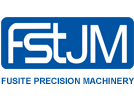Needle bearing science-bearing type
Time: 2021-05-18
Needle roller bearings have a wide range of types and forms. In order to select a suitable bearing to achieve the design purpose, it is necessary to synthesize the performance requirements of the bearing, the performance requirements of the bearing, and the analysis of the specifications around the bearing.
Since it is usually determined to determine the axial diameter and then select the bearing, it is necessary to first determine the type of bearing and the installation space and arrangement method of the bearing, and initially determine the type of bearing; secondly, analyze and compare "bearing life" and "calculated based on bearing load" The “bearing life” determines the size of the bearing; finally, the accuracy level, internal clearance, bracket, lubricant and other internal structure of the bearing need to be determined.
Needle bearing science-bearing type
The general steps for selecting needle roller bearings are:
1. Determine the type and configuration of needle roller bearings. (The reference factors are: bearing installation space; load size, direction and nature; speed; rotation accuracy; noise and friction torque; rigidity; relative inclination of inner and outer rings; installation and removal; performance and disassembly;
2. Determine the size of needle roller bearings. (Bearing life required by machinery; load capacity; quantity is electrostatic; speed; main size of bearing; basic fixed load; basic quantity of static load; static load; allowable axial load).
3. Determine the accuracy level. (Rotation accuracy; noise and friction torque; speed; bearing accuracy).
4. Cooperate with internal clearances. (Load size and performance; temperature during operation; shaft and housing material, size and accuracy; fit; temperature difference between inner ring and outer ring; speed; preload force; bearing accuracy; bearing internal clearance; bearing internal clearance; Bearing internal clearance; bearing internal clearance; bearing internal clearance; bearing internal clearance; bearing internal clearance;
5. Holder material and pattern. (Speed; noise)
6. Corresponding to special environments. (Media conditions, such as temperature, sea water, vacuum, drugs, dust, gas, magnetic field, etc.; special materials; special heat treatment; special surface treatment; lubricants).
7. Lubrication, lubricant and sealing device. (Using temperature; speed; lubrication method; lubricant; sealing device; limiting bearing speed; lubrication life).
8. Installation and disassembly method and installation related size.
9. The final determination of the bearing and its peripheral specification parameters can meet the required performance of the bearing.
